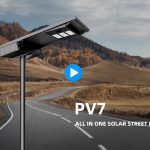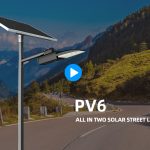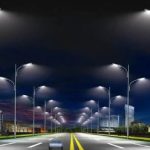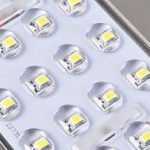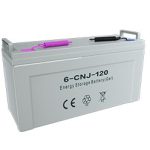Solar Street Lights With Auto Intensity Controller and Working Principle

When day goes off and night comes on, how can solar street lights be automated?
This solar street lights with auto intensity controller produced by ZGSM can achieve this control effect.
With the continuous development of photovoltaic technology, solar street lights are becoming more and more common in our lives. We all know that after solar energy is illuminated during the day, the light energy is converted into electrical energy, which is then stored by the battery, and the battery is stored at night. It provides electric energy to the light source to achieve the lighting effect.
So how does it convert light sources into electrical energy through solar panels and store it? What configurations will be involved in this process? Below we can learn more about it in detail.
Principle of power generation
Solar street lights can generate electricity mainly by utilizing the photovoltaic effect of semiconductor materials, which can convert solar radiation into electrical energy.
A solar cell is composed of two different semiconductors, N-type and P-type. The place where they meet is called the P-N junction. When the solar panel receives light, the P-N junction will release light energy due to the acquisition of light. electrons, producing corresponding electron-hole pairs.
The holes in the N-type semiconductor will move to the P-type, and the electrons in the P-type region will move away from the N-type region, forming a current from the N-type region to the P-type region. When the external circuit is turned on, there will be Electric energy is output.
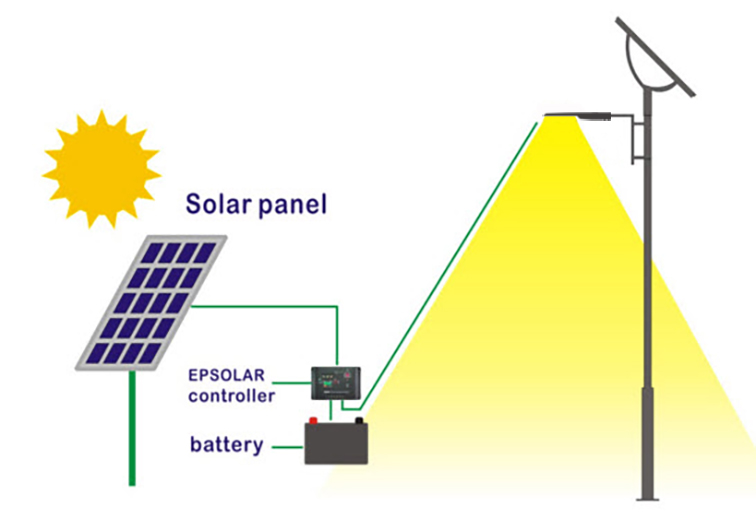
System Configuration
The solar street light power generation system is mainly composed of solar panels, controls and batteries. If the output power supply is AC 220V or 110V, it will also involve an inverter. So what role will they play in this process?
Solar Panel
The well-deserved core part of the power generation system, as mentioned above, can convert the received light energy into electrical energy, and then send it to the battery for storage. This electrical energy is mainly used for night lighting and also plays a role in load work. effect.
Solar Street Lights With Auto Intensity Controller
The full name is solar charge and discharge controller. It is mainly used to control the working status of the entire system. It also protects the battery from overcharge and overdischarge. There are two types: PWM and MPPT. The former has a simple structure and low cost, but its efficiency will be affected. Affected by temperature, the latter allows the solar panel to always output at maximum power and has higher charging efficiency, but the price is more expensive. You can choose according to your specific needs when purchasing.
In addition, street light control and time control functions are also implemented on the controller. Nowadays, it is generally a time control + light control mode, which is energy-saving and highly efficient. There are relatively few pure light control or pure time control. If you install solar street lights, The temperature difference is relatively large, and the controller often has a temperature compensation function to better adapt to the environment.
Battery
It mainly functions to store electrical energy and then release it when needed. Lead-acid batteries were commonly used in the past, but these batteries have small specific capacity, are bulky and inefficient. They are usually buried underground and are easily stolen. .
The commonly used lithium iron phosphate batteries are perfect in all aspects. Their work efficiency and safety are much better. They are generally integrated with the solar panel design. There is no need to worry about theft. Although the price is not as good as Lead-acid batteries are so cheap, but not too outrageous, and are very cost-effective. Generally speaking, they are a more suitable choice.
Inverter
There are two types of DC-AC inverters and DC-DC inverters. The former mainly plays the role of converting the DC power output from the solar power generation system into AC power, because the direct output of solar energy is generally 12V/24V/48V. DC voltage can be converted into 110V or 220V AC power with a DC-AC inverter.
The latter is for some situations where loads need to use multiple voltages, such as converting 24V DC power into 5V DC power. This process needs to be realized through a DC-DC inverter.
Author

ZGSM Solar
We are a professional solar street light manufacturer with a 20-year history.


